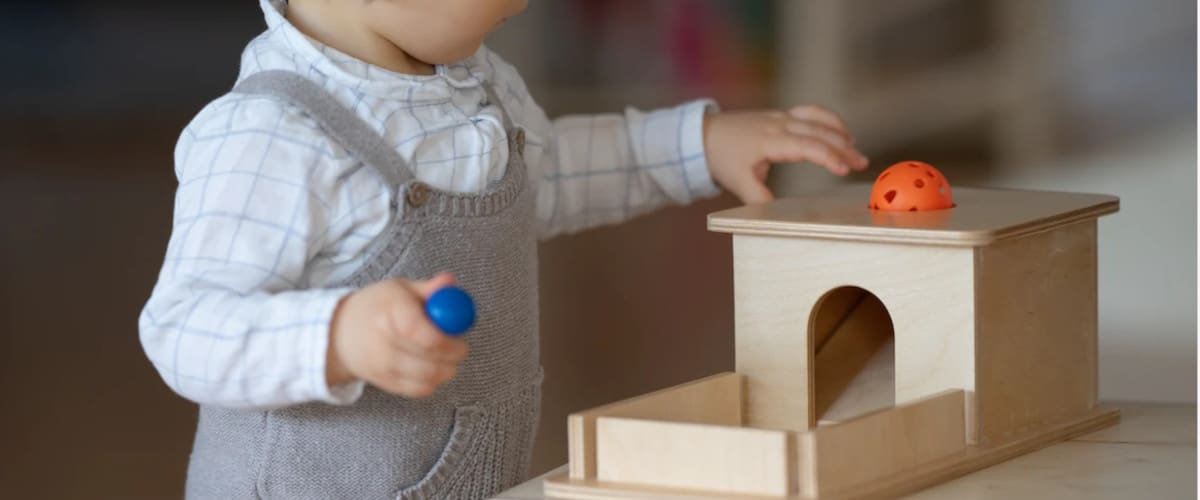
Have you heard of the Pikler pedagogy? It owes its name to Dr. Emmi Pikler and promotes freedom and respect for autonomy of the smallest. Said like that, it sounds very good, but what are its pillars and how can we apply them at home?
Until just a few months ago, I had hardly read much about this pedagogy, which is not far from others but has interesting principles that it may be convenient to apply in the education of the little ones. Discover them and decide for yourself!
Principles of Pikler pedagogy
Emmi Pikler began working at the 'Cridle House' in Budapest in the 40s. And it was there working with those orphans when she realized the importance that factors such as movement or the establishment of affective bonds had in the child development. In fact, these are two of the principles that would later govern the pedagogy that bears his name.

strong emotional ties
For the proper development of children it is essential that they believe strong emotional bonds with their adult role models. And these should not be limited to their father and mother, but extend to all those who take responsibility for them.
This attachment is essential for children to feel protected and accompanied. For this, adults must observe and supervise, but only intervene when strictly necessary or the child requests it, in order to respect their processes and help them gain confidence and security in their abilities.
Without a good communication Both verbal and non-verbal, it is difficult to create strong affective bonds. That is why it is necessary from when they are babies to talk to them, explain to them what is being done and why it is being done while we change or feed them. But also encourage them with their eyes, make them feel that we trust them.
Freedom of movement
Pikler pedagogy emphasizes the need to respect the child's time, to let them progress at their own pace, intervening as little as possible so as not to interfere with their learning. Thus, for example, pedagogy invites us to reject all those elements (cribs, high chairs, deckchairs) that impose positions on the little ones that they are not willing to adopt.
Working on their movement naturally and at their own pace will contribute to their development from a psychomotor point of view. To take the next step with confidence (crawl, walk...) a child must understand her environment and the limits of her body and overstimulating and overprotecting them we are denying it.
Free play
Free play is another of the principles of Pikler pedagogy. For this, it is necessary to provide them with a safe and adapted space that you find stimulating, as well as comfortable clothing that does not restrict your movements. Have you heard of the Pikler triangle?
El Pikler triangle It is a wooden structure that allows the child to climb and thus work on their motor development and confidence. Suitable from 6 months with supervision, it is usually combined with rockers and tables that serve as a work table or slide. Look at them!
Stability
Stability is another of the fundamental factors in the Pilker method. The boy or girl must grow up in a stable environment that does not change constantly and where listening and affective attention are valued. It is important that you enjoy good physical health, but also emotional health.
How to apply it at home
Do you want to apply this pedagogy at home? It is essential for this that you respect the children's times and that you accompany them but intervene as little as possible. Yes, it is something that is difficult for us to do because everything scares us, but it is the first step of many that you can take:
- Avoid furniture that limits movement such as cribs, high chairs or walkers.
- Create a safe play space on the floor by placing a non-slip rug, some cushions, as well as objects of different sizes and textures that favor their sensory stimulation.
- Get a Pikler triangle or place some poufs that allow them to climb onto the sofa, for example, from 8 months.
- Observe the child in his games and movements but do not intervene if there is no real danger. Allow your child to play alone.
- Put them comfortable clothes and avoid shoes so that they are more free.
- Explain to them why they have to do certain things (eat, change, dress, clean up...) from day one.
Do you like the principles of the Pikler method?